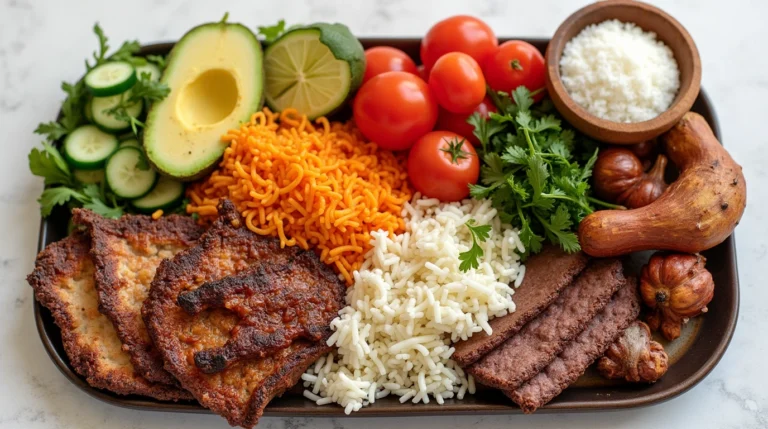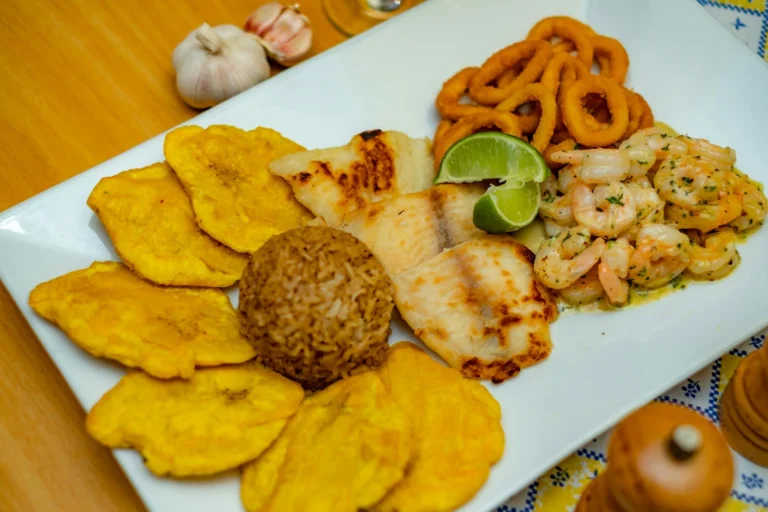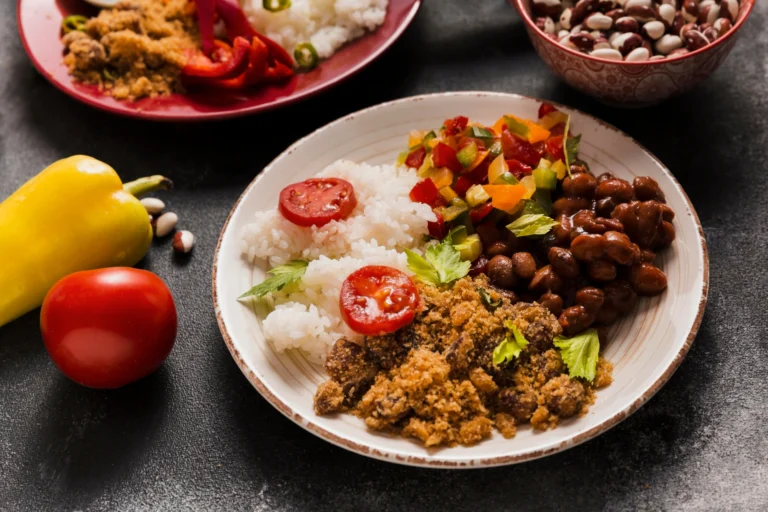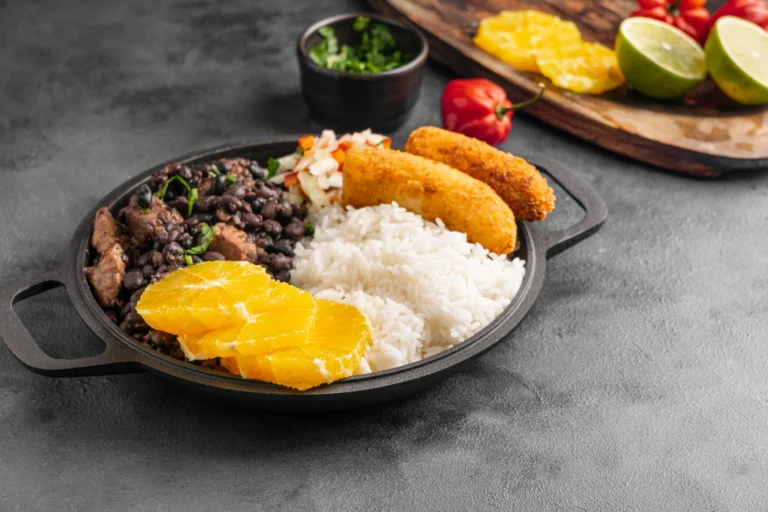15 Amazing Argentina Foods That Will Transport You to Buenos Aires
Looking to embark on a mouthwatering journey through South America‘s culinary powerhouse? Argentina foods offer an irresistible blend of European influences and local traditions that will transport your taste buds to new heights. As someone who’s spent years exploring the vibrant food scenes across Argentina, I’m excited to share the ultimate guide to this country’s most beloved dishes.
Table of Contents
The Heart and Soul of Argentina Foods: A Cultural Journey
When you think about Argentina foods, imagine the sizzle of perfectly grilled meat over open flames, the aroma of freshly baked empanadas wafting through cobblestone streets, and the rich history behind every dish. Argentina cuisine isn’t just about eating – it’s a celebration of family, tradition, and the art of slow cooking.
The Italian-Spanish Connection
What makes Argentina food truly unique is its fascinating fusion of influences. While the country is famous for its beef, Argentina’s most popular food reflects a beautiful marriage of Italian and Spanish culinary traditions. From pasta dishes that rival those found in Rome to empanadas that echo Spanish heritage, Argentina dishes showcase a diverse cultural tapestry.
The Crown Jewel: Asado – More Than Just Barbecue

No discussion about Argentina cuisine would be complete without diving into asado. This isn’t just another barbecue – it’s a social ritual that brings families and friends together, often lasting several hours. The parrillada (mixed grill) typically includes:
- Chorizo and morcilla (blood sausage)
- Perfectly grilled cuts of beef
- Crispy chinchulines (intestines) for the adventurous
- Tender lamb and pork cuts
The Art of the Asador
The asador (grill master) plays a crucial role in what Argentina is famous for – their legendary barbecue skills. They understand that patience is key, using different heat zones and timing to ensure each cut reaches perfection. The secret? Low and slow cooking over wood or charcoal embers, never direct flames.
Street Food Paradise: Empanadas and Beyond

Argentine street food culture offers a delicious window into everyday life. Empanadas, perhaps the most portable of all Argentina foods, come with countless fillings:
- Carne (seasoned ground beef)
- Pollo (chicken)
- Jamón y queso (ham and cheese)
- Humita (corn)
- Verdura (vegetables)
The Italian Influence: Milanesa and Pasta
Argentina’s most popular food lineup wouldn’t be complete without mentioning milanesa. This breaded cutlet, usually beef or chicken, represents the strong Italian influence in Argentina cuisine. Served with french fries or mashed potatoes, it’s comfort food at its finest.
Pasta Paradise
Did you know that Argentina dishes include some of the best pasta outside of Italy? Every Sunday, many Argentine families gather for pasta dishes like:
- Sorrentinos (large round ravioli)
- Tallarines (fettuccine)
- Ñoquis (gnocchi) – traditionally eaten on the 29th of each month
The Sweet Side of Argentina Foods
No exploration of Argentina food would be complete without mentioning dulce de leche. This caramel-like spread finds its way into countless desserts:
Signature Sweets
- Alfajores: Cookie sandwiches filled with dulce de leche
- Flan con dulce de leche
- Medialunas: Argentine croissants
- Postre vigilante: Cheese and sweet potato paste dessert
Regional Specialties: Beyond Buenos Aires
Different regions of Argentina offer unique interpretations of traditional dishes. Here’s what you’ll find:
Northwest
- Locro (hearty stew)
- Empanadas salteñas (different from Buenos Aires style)
- Tamales and humitas
Patagonia
- Cordero patagónico (Patagonian lamb)
- Trucha (local trout)
- Calafate berry desserts
The Perfect Pairings: What to Drink

Argentina’s famous Malbec wine perfectly complements these dishes, but don’t miss out on:
- Mate: The national drink and social cornerstone
- Fernet con coca: A bitter spirit mixed with Coca-Cola
- Regional wines from Mendoza and Salta
Modern Interpretations of Classic Argentina Foods
Today’s chefs are reimagining traditional Argentina dishes while respecting their essence. You’ll find:
- Vegetarian empanadas with innovative fillings
- Fusion asado techniques
- Modern takes on classic desserts
Food Festivals and Celebrations
Throughout the year, Argentina celebrates its culinary heritage with various food festivals:
- Festival Nacional del Asado (National Barbecue Festival)
- Fiesta Nacional de la Empanada (National Empanada Festival)
- Wine harvest festivals in Mendoza
Tips for Experiencing Argentine Cuisine
- Don’t rush your meals – dining is a social experience
- Try the local specialties in each region
- Visit both traditional parrillas and modern restaurants
- Take a cooking class to learn authentic techniques
- Explore local markets for ingredients
The Art of Argentine Pizza: A Unique Interpretation
When exploring Argentina foods, you can’t miss the country’s distinctive take on pizza. While Italian immigrants brought pizza-making traditions, Argentina cuisine has evolved its own pizza style that’s worth discovering.

Buenos Aires Pizza Culture
The capital city’s pizza scene showcases what Argentina is famous for – adapting international dishes to local tastes. Key characteristics of Argentine pizza include:
- Extra thick, chewy crust
- Abundant mozzarella cheese
- Minimal sauce
- Unique toppings like ham and roasted red peppers
Popular varieties of Argentina’s most popular food include:
- Fugazza: Topped with sweet onions and oregano
- Fugazzeta: Stuffed with cheese and topped with onions
- Napolitana: Topped with tomatoes, garlic, and fresh parsley
Traditional Breakfast Culture in Argentina
While Argentina food is renowned for its hearty lunches and late dinners, breakfast offers its own delights:
Morning Favorites
- Medialunas (sweet croissants)
- Tostadas (toasted bread) with butter and dulce de leche
- Café con leche (coffee with hot milk)
- Fresh-squeezed orange juice
The Rise of Food Tourism in Argentina
Argentina dishes have become a major draw for culinary tourists. Here’s what’s driving this trend:
Popular Food Experiences
- Asado cooking classes
- Wine tasting tours in Mendoza
- Empanada-making workshops
- Street food tours in Buenos Aires
- Traditional mate ceremonies
Gaucho Cuisine: The Cowboys’ Kitchen
The gaucho tradition heavily influences Argentina foods, especially in rural areas. These skilled horsemen developed their own cooking techniques and dishes:
Traditional Gaucho Dishes
- Carbonada (meat and vegetable stew)
- Puchero (hearty soup)
- Tortas fritas (fried bread)
- Mate cocido (cooked mate tea)
Seasonal Food Traditions
Argentina cuisine changes with the seasons, offering different specialties throughout the year:
Winter Comfort Foods
- Locro (corn and meat stew)
- Guiso de lentejas (lentil stew)
- Hot chocolate with churros
Summer Favorites
- Ensalada rusa (potato salad)
- Sandwich de miga (crustless sandwiches)
- Helado artesanal (artisanal ice cream)
The Evolution of Argentina Foods
Modern Argentina food culture continues to evolve while honoring traditions:
Contemporary Trends
- Plant-based alternatives to classic dishes
- Fusion restaurants combining local and international flavors
- Craft beer pairing with traditional foods
- Food truck culture
- Farm-to-table movements
Sustainability in Argentine Cuisine
- Local ingredient sourcing
- Organic farming practices
- Nose-to-tail cooking
- Sustainable wine production
Food Markets and Shopping
To truly understand Argentina foods, visit these markets:
Notable Markets
- Mercado de San Telmo, Buenos Aires
- Mercado Central, Mendoza
- Mercado Norte, Córdoba
Home Cooking Traditions
Argentina cuisine thrives in home kitchens, where recipes pass down through generations:
Family Favorites
- Sunday pasta tradition
- Holiday special dishes
- Family asado techniques
- Secret sauce recipes
Health Aspects of Argentine Cuisine
While Argentina food is often meat-heavy, there are healthy aspects to consider:
Nutritional Benefits
- High-quality protein from grass-fed beef
- Fresh vegetables in salads
- Healthy fats from olive oil
- Antioxidants from Malbec wine
- Yerba mate’s nutritional properties
Argentina Foods in World Cuisine
The global influence of Argentina dishes continues to grow:
International Recognition
- World-famous steakhouses
- Exported wines
- Growing popularity of mate
- International food festivals
Tips for Cooking Argentina Foods at Home
For those wanting to recreate authentic Argentina cuisine:
Essential Equipment
- Parrilla (grill) or grill pan
- Mate gourd and bombilla
- Empanada molds
- Cast iron skillet

Key Ingredients
- Quality beef cuts
- Fresh herbs for chimichurri
- Yerba mate
- Dulce de leche
This expansion of our guide to Argentina foods provides even more depth and context to understand this rich culinary tradition. Whether you’re planning to visit Argentina or want to explore these flavors at home, you now have a comprehensive resource for navigating one of the world’s most exciting food cultures.
Frequently Asked Questions About Argentina Foods
What is traditional Argentinian food? Traditional Argentinian food centers around grilled meats (asado), empanadas, milanesa, and pasta dishes, reflecting a mix of indigenous, Spanish, and Italian influences.
What is asado? Asado is Argentina’s traditional barbecue, involving various cuts of meat grilled over wood or charcoal. It’s both a cooking method and a social event, often lasting several hours.
What are empanadas? Empanadas are savory pastries filled with meat, chicken, cheese, or vegetables. Each region has its own distinctive style and folding technique.
Is Argentinian cuisine influenced by other cultures? Yes, Argentinian cuisine shows strong influences from Italian and Spanish traditions, seen in pasta dishes, pizza styles, and cooking methods.
What are some popular Argentinian desserts? Popular desserts include dulce de leche-based treats like alfajores, flan, and various pastries.
What is chimichurri sauce? Chimichurri is a fresh herb sauce made with parsley, garlic, olive oil, vinegar, and spices, traditionally served with grilled meats.
Are there vegetarian options in Argentinian cuisine? While meat is central to Argentine cuisine, vegetarian options include cheese empanadas, vegetable-based pasta dishes, and grilled vegetables.
What beverages are popular in Argentina? Popular beverages include Malbec wine, mate (herbal tea), and Fernet con coca.
Where can I find the best Argentinian food? While Buenos Aires offers excellent options, each region has its specialties. Traditional parrillas (grills) and family-owned restaurants often provide the most authentic experience.
What is milanesa? Milanesa is a breaded meat cutlet, usually beef or chicken, that’s breaded and fried until golden, often served with potatoes or salad.
Conclusion
Argentina foods represent more than just sustenance – they’re a gateway to understanding the country’s rich cultural heritage and social traditions. Whether you’re planning a trip or looking to explore these flavors at home, Argentine cuisine offers a unique and satisfying culinary adventure that will leave you craving more. From the smoky allure of asado to the sweet comfort of dulce de leche, each dish tells a story of tradition, innovation, and passion for good food.
Remember, the best way to experience Argentina’s culinary treasures is to take your time, share with friends, and embrace the social aspect of dining. ¡Buen provecho!







